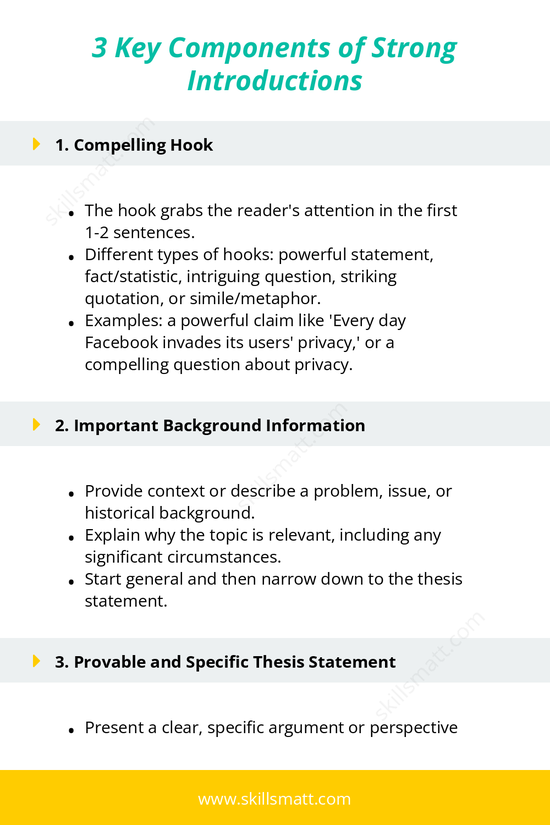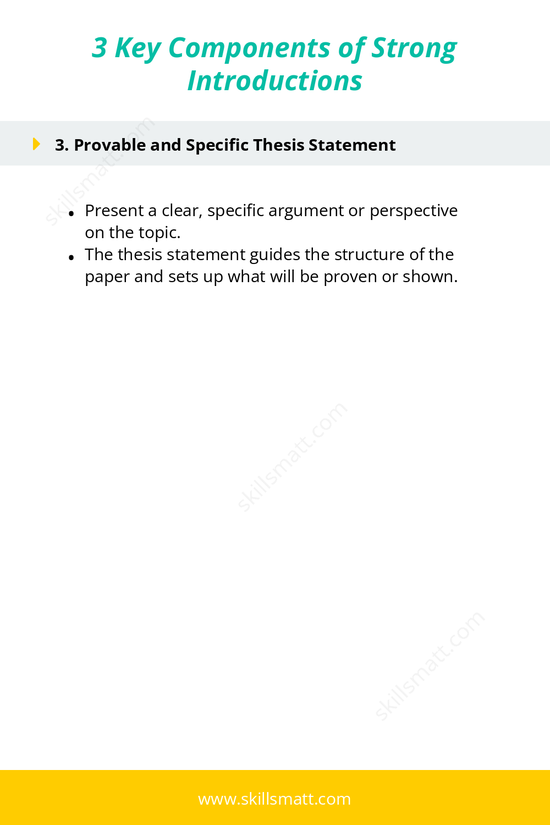3 Key Components of Strong Introductions
1. Compelling Hook
- The hook grabs the reader’s attention in the first 1-2 sentences.
- Different types of hooks include a powerful statement, fact/statistic, intriguing question, striking quotation, or simile/metaphor.
- Examples: A powerful claim like 'Every day Facebook invades its users’ privacy,' or a compelling question about privacy.
2. Important Background Information
- Provide context or describe a problem, issue, or historical background.
- Explain why the topic is relevant, including any significant circumstances.
- Start general and then narrow down to the thesis statement.
3. Provable and Specific Thesis Statement
- Present a clear, specific argument or perspective on the topic.
- The thesis statement guides the structure of the paper and sets up what will be proven or shown.


